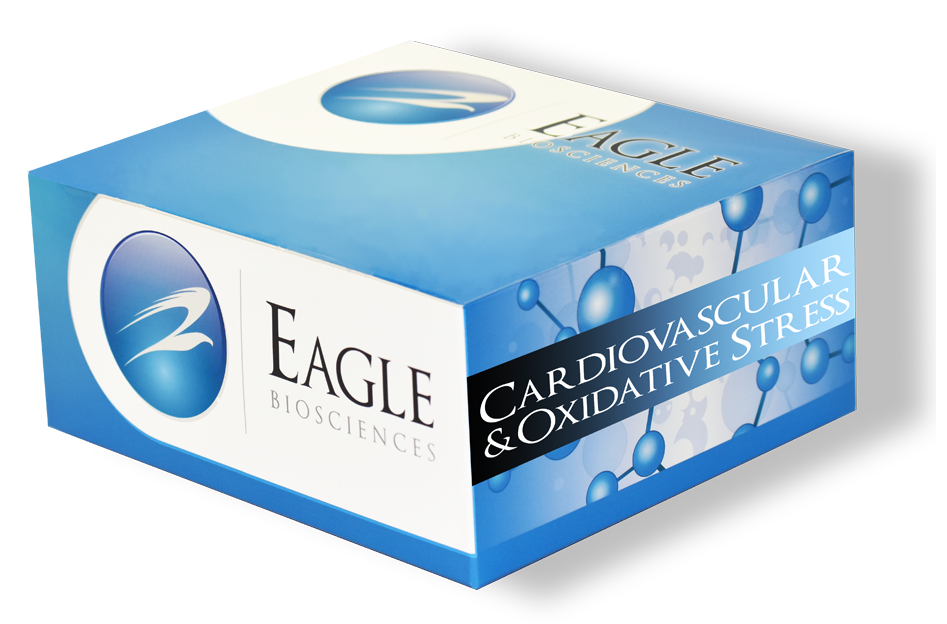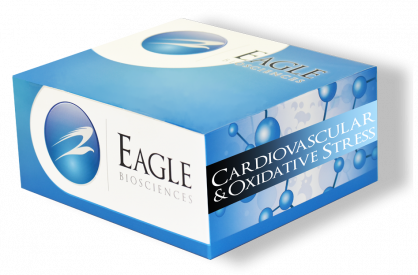High Sensitive CRP ELISA Assay
The High Sensitive CRP ELISA Assay is For Research Use Only
Product Developed and Manufactured in the USA
Size: 1×96 wells
Sensitivity: 0.1 mg/L
Dynamic Range: Neonatal serum: 0.01 to 0.35mg/L, Adult serum: 0.068 to 8.2 mg/l
Incubation Time: 1.5 hours
Sample Type: Serum
Sample Size: 5 µL
Alternative Names: hs-CRP, C-Reactive Protein
Assay Background
C- Reactive protein (CRP) was identified by Tilet and Francis (1930) in the plasma of patients with pneumonia, and was named for its ability to bind and precipitate the C-polysaccharide of pneumococcus. It is an alpha globulin with a molecular mass of approximately 110,000 to 140,000 daltons, and is composed of five identical subunits, which are noncovalently assembled as a cyclic pentamer.3 CRP is synthesized in the liver and is normally present as a trace constituent of serum or plasma at levels less than 0.3 mg/dl. Its physiological roles are numerous and varied, but with several functions similar to those of immunoglobulins, CRP appears to function in host defense.
CRP is one of the acute-phase proteins, the serum or plasma levels of which rise during general, nonspecific response to a wide variety of diseases. This include infections by gram-positive and gram-negative organisms, acute phase of rheumatoid arthritis, abdominal abscesses, and inflammation of the bile duct. CRP may also be found in patients with Guillain-Barre syndrome and multiple sclerosis, certain viral infections, tuberculosis, acute infectious hepatitis, many other necrotic and inflammatory diseases, burned patients and after surgical trauma.
Although the detection of elevated levels of CRP in the serum is not specific for any particular disease, it is a useful indicator of inflammatory processes. CRP levels rise in serum or plasma within 24 to 48 hours following acute tissue damage, reach a peak during the acute stage (approximately 1000x constitutive level) and decrease with the resolution of inflammation or trauma. The concentration increase of CRP in human serum or plasma may last for several days before decreasing to normal levels.
The detection of CRP is a more reliable and sensitive indicator of the inflammatory process than the erythrocyte sedimentation rate, which may also be influenced by physiological changes not associated with an inflammatory process. Current testing methods including latex agglutination, nephelometry, and radial immunodiffusion (RID) have the general disadvantages of low sensitivity, whereas enzyme-linked immunosorbent assays (ELISA) provide the highest sensitivity and specificity.
As elevated CRP values are always associated with pathological changes, the CRP assay provides useful information for the diagnosis, therapy and monitoring of inflammatory processes and associated disease.10-13 Additionally, measurement of CRP by high-sensitivity CRP assays may add to the predictive value of other cardiac markers (myoglobin, creatine-kinase-MB, troponin I and T), which are used to assess the risk of cardiovascular and peripheral vascular disease. As increases in CRP values are non-specific, they should not be interpreted without a complete patient history evaluation, and measurements of CRP should be compared to previous values.
Related Products to CRP ELISA
Ultra High Sensitive C-Reactive Protein FAST ELISA Assay
Mouse CRP ELISA Assay
Canine CRP ELISA Assay



